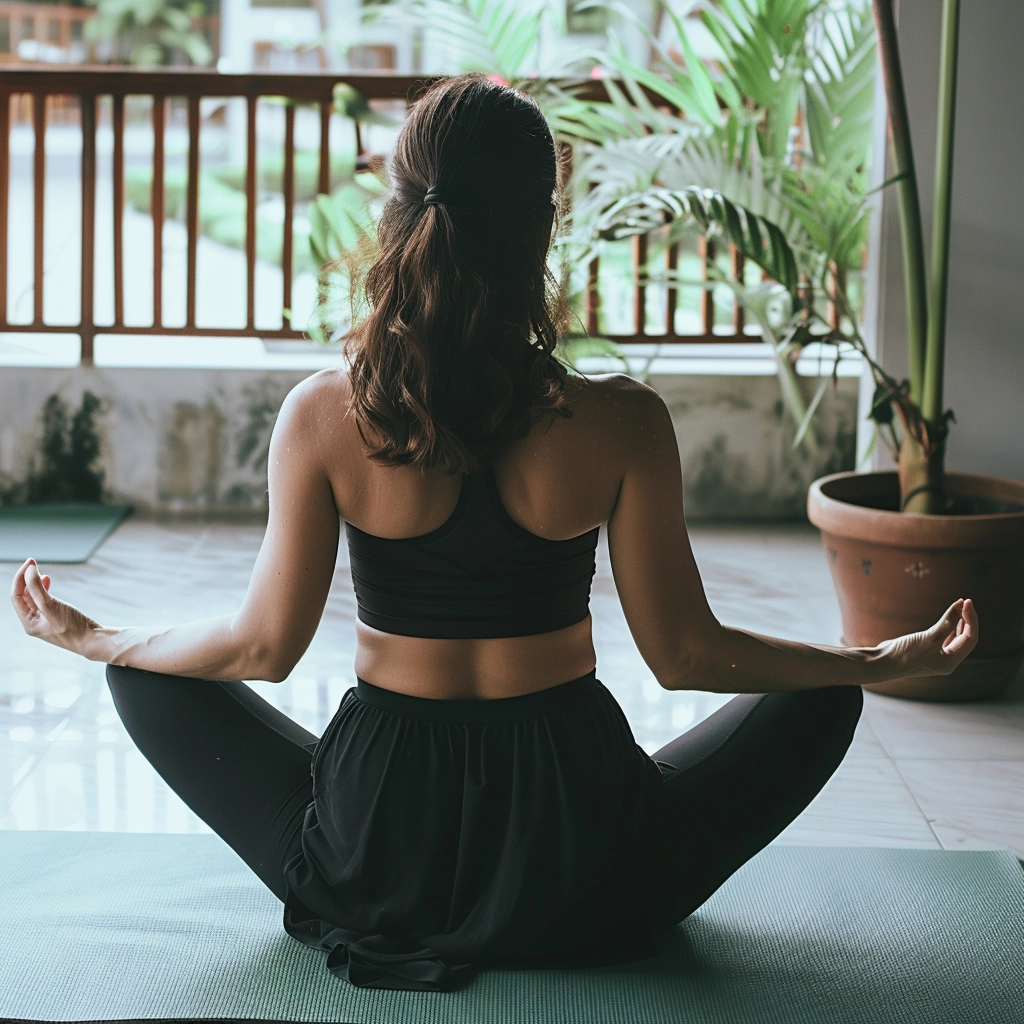Introduction to Yoga Apparel
Choosing the right yoga clothes is crucial for comfort and the effectiveness of your yoga practice. The right attire can significantly enhance your ability to move freely, maintain postures, and stay focused. This guide explores the essentials of yoga clothing, helping you make informed decisions for a better yoga experience.
Understanding the Essentials of Yoga Clothing
Yoga wear should be comfortable, and breathable, and allow for a full range of motion. The fabric plays a key role, with materials like cotton, bamboo, and technical synthetics offering various benefits such as moisture-wicking properties and stretchability.
What Clothes to Wear for Yoga
For yoga, opt for clothes that fit well and provide comfort and flexibility. Tops should be snug enough to stay in place during inverted poses, while bottoms should offer stretch and freedom of movement without slipping. Breathability and fit are paramount to ensure focus and ease throughout your practice.
Choosing the Right Yoga Pants
Yoga pants range from tight-fitting leggings to more relaxed styles. The choice depends on your comfort and the type of yoga you practice. High-waisted leggings can provide extra support and coverage, while loose-fitting styles offer breathability and ease of movement for more relaxed practices.
The Best Tops for Yoga Practice
When selecting a top for yoga, consider both fitted and loose options. Fitted tops can prevent distractions during forward bends and inversions, while loose, breathable tops may be preferred for gentler yoga styles. Look for moisture-wicking fabrics to keep you comfortable.
Supportive Yoga Wear: Sports Bras and More
A good sports bra is essential for comfort and support during yoga, especially for those with larger busts. Look for yoga bras that offer the right balance between support and comfort, without restricting movement.
Accessories and Extras for Yoga
While not essential, yoga socks and gloves can provide extra grip for those who practice in colder environments or have sweaty hands and feet. Other accessories, like yoga mats and blocks, are fundamental to many practitioners’ routines.
Yoga Clothing for Different Styles of Yoga
Your clothing choices may vary depending on the style of yoga you practice. For example, hot yoga requires moisture-wicking fabrics to manage sweat, while restorative yoga calls for looser, more comfortable clothing to relax fully into poses.
Maintaining Your Yoga Clothes
To keep your yoga clothes in the best condition, follow care instructions closely, typically opting for gentle wash cycles and avoiding fabric softeners that can degrade moisture-wicking properties.
Finding Sustainable and Ethical Yoga Wear
In the spirit of yoga’s principles of mindfulness and respect for all living beings, it’s important to choose yoga wear that reflects these values. Below is a curated list of brands that are known for their commitment to sustainability and ethical production practices. These brands focus on using eco-friendly materials, ensuring fair labor practices, and reducing their environmental impact.
- Patagonia
- Known for: High-performance yoga wear made from recycled polyester and organic cotton.
- Ethical practices: Fair Trade Certified™ sewn, commitment to environmental activism.
- Prana
- Known for: Yoga and activewear made from sustainable materials like organic cotton, hemp, and recycled fibers.
- Ethical practices: Fair labor conditions, support for environmental causes, and use of bluesign®-approved fabrics to minimize environmental impact.
- Teeki
- Known for: Eco-friendly yoga pants made from recycled plastic bottles.
- Ethical practices: Sustainable manufacturing processes that reduce water waste.
- Manduka
- Known for: High-quality yoga mats, props, and apparel with a focus on sustainability.
- Ethical practices: Use of natural, renewable, or recycled materials and responsible manufacturing.
- Girlfriend Collective
- Known for: Inclusive activewear made from recycled materials, such as fishing nets and plastic water bottles.
- Ethical practices: Transparent supply chain, ethical manufacturing, and body-positive marketing.
- Wolven
- Known for: Yoga wear made from post-consumer recycled plastic, with a focus on unique patterns and designs.
- Ethical practices: Carbon-neutral production, ethical manufacturing, and a portion of sales go towards environmental causes.
- Organic Basics
- Known for: Minimalist activewear made from organic cotton and recycled materials.
- Ethical practices: Focus on reducing environmental footprint, fair labor practices, and transparency in production.
- Pact
- Known for: Comfortable and soft yoga wear made from organic cotton.
- Ethical practices: Fair Trade Certified™, eco-friendly packaging, and commitment to reducing carbon footprint.
- Tentree
- Known for: Eco-friendly activewear and lifestyle apparel made from sustainable materials.
- Ethical practices: For every item sold, ten trees are planted, to plant 1 billion trees by 2030.
- Yoga Democracy
- Known for: Vibrant and colorful yoga wear made from recycled materials.
- Ethical practices: Nearly zero water waste in production, made in the USA to ensure fair labor practices.
Supporting these brands helps promote a more sustainable and ethical fashion industry. By choosing yoga wear that aligns with your values, you contribute to the well-being of the planet and its inhabitants.
Conclusion
Selecting the right yoga clothes can significantly enhance your practice, providing the comfort, flexibility, and support needed to engage in every pose fully.
By considering the type of yoga you practice, your personal comfort preferences, and the importance of sustainable and ethical production, you can choose attire that not only feels great but also aligns with your values.
FAQs
Yoga clothes should fit snugly enough to allow freedom of movement without restriction, yet not so tight that they cut into your skin or restrict your circulation. The key is to choose clothes that stay in place during various poses, especially inversions, without shifting or bunching up. Ideally, yoga tops and bottoms should move with your body as if they're a second skin, ensuring comfort and flexibility during your practice.
Yes, you can wear regular workout clothes for yoga, as long as they meet the basic requirements of comfort, flexibility, and breathability. However, yoga-specific clothes are often designed with the range of motion in mind, offering features like higher waistbands on leggings to provide coverage during bending and stretching, and tops that stay in place. If your workout clothes provide similar benefits, they can serve well for yoga too.
The best materials for yoga clothes are those that offer stretch, breathability, and moisture-wicking properties. Fabrics like a blend of spandex and polyester or nylon can provide the stretch and moisture management needed for a comfortable practice. Natural fibers like bamboo, cotton, or a cotton blend are also popular for their softness and breathability, although they may not wick moisture as effectively as synthetic blends. Ultimately, the best material depends on personal preference and the specific requirements of your yoga practice.
The frequency of replacing yoga clothes depends on their wear and tear, how often you practice, and the quality of the garments. High-quality, durable yoga wear can last for several years with proper care. Look for signs of wear such as thinning fabric, loss of elasticity, fading, or stitching coming undone as indicators that it's time for a replacement. Regular practitioners might find they need new garments every 6 to 12 months, while casual practitioners may get a longer life out of their gear.
Yes, there are specific yoga clothes designed for men and women, catering to their different body shapes and comfort needs. Women's yoga clothes often include supportive tops, sports bras, and a variety of leggings and shorts with different waistband options. Men's yoga clothing tends to focus on breathable, loose-fitting pants or shorts and fitted or loose tops that offer comfort without excess fabric that could interfere with poses. However, the most important factor is personal comfort and suitability for yoga practice, regardless of gender-specific designs.





No comment